 Your new post is loading...
 Your new post is loading...
Journalists are busy people. If you bring something to their attention that captures their imagination—or, more importantly, the imagination of their readers, listeners and/or viewers—it has a chance of being newsworthy. Newsworthiness is critical to gaining and keeping access to journalists. If you contact them with information of marginal value that wastes their time, barriers grow. And, each time you waste their time, access becomes harder the next time around. So, when deciding whether or not to contact the media about a story (or asking your public or media relations professionals to do so), the most important thing to ask yourself is: Is this newsworthy?...
Marketers and public relations professionals can find plenty of advice on how to write a press release, but rarely is that advice directly from the journalists that press releases attempt to engage.
It turns out, journalists have a lot to say about press releases. It also turns out that marketers have a lot to learn.
Although I recently joined an inbound marketing agency, I'm a 25-year veteran the Chicago Sun-Times and the Contra Costa Times, among other. For decades I started my mornings weeding through the press releases in my inbox, one finger hovering over the "delete" key and ready to strike.
Wondering whether things have gotten better lately, I reached out to several journalist friends.
"Most of what I get is garbage," said Mary Pols, a longtime Portland Press-Herald/Sunday Telegram reporter who has also worked at the Los Angeles Times.
Ouch.
Follow these top 9 recommendations to stand out....
It can be difficult to get a news release approved internally—even without thinking about search engine optimization.
However, if exposure, disclosure or page views are your goals, you must heed content discoverability and make your release SEO-friendly.
A list of search engine violations and penalties shows ways your content can fail to attract attention online. This applies to all your owned media content—including your website and news releases.
What makes some releases more successful than others in terms of drawing traffic? They’re written with healthy SEO features. These successful news releases appeal to Google’s latest algorithm, which rewards high-quality, unique and non-spam content.
Follow these five simple steps to create releases that can rank high in search results....
The Republican frontrunner met with the editorial board on Monday morning. The full transcript follows at the link above: FREDERICK RYAN JR., WASHINGTON POST PUBLISHER: Mr. Trump, welcome to the Washington Post. Thank you for making time to meet with our editorial board. DONALD TRUMP: New building. Yes this is very nice. Good luck with it. RYAN: Thank you… We’ve heard you’re going to be announcing your foreign policy team shortly… Any you can share with us? TRUMP: Well, I hadn’t thought of doing it, but if you want I can give you some of the names… Walid Phares, who you probably know, PhD, adviser to the House of Representatives caucus, and counter-terrorism expert; Carter Page, PhD; George Papadopoulos, he’s an energy and oil consultant, excellent guy; the Honorable Joe Schmitz, [former] inspector general at the Department of Defense; [retired] Lt. Gen. Keith Kellogg; and I have quite a few more. But that’s a group of some of the people that we are dealing with. We have many other people in different aspects of what we do, but that’s a representative group....
As President Xi Jinping continues his crusade against corruption in China, we're learning how high the rot reaches into the ranks of the Communist Party. Yet amid the headlines about avaricious officials and unsavory ties between senior party leaders and moneyed interests, stories about the pervasive workaday ethical challenges are often lost. One example of relevance to marketers is the practice of paying for editorial coverage.
The most common form of this practice is the "transportation fee" paid to reporters in return for conducting an on-site interview, or for participating in a press conference. Fees hover around RMB ¥300 (about $50), and are given to the reporter in a red envelope inserted inside a press kit. However, it's worth noting that sums as high as ¥3,000 (approximately $500) are sometimes paid.
Knowledge of these practices within companies varies. For some, these fees are discreetly buried within other payments they make to outside agencies. For others, it's understood to be a "cost of doing business." Justification includes the argument that everyone does it, including multinational brands and big PR agencies; that getting media coverage without it would be impossible; and that Chinese journalists actually need the money because their salaries are so low....
Even the most experienced of us, can still learn a thing or two about pitching the press more effectively. I myself find that in the art of pitching, there’s definitely a continuous process of learning to refine the pitch and deliver the message in the best way possible.
With that thought in mind, as a side project, my colleagues and I have created a site entitled, “How To Pitch Me” that aims to help those who strive to pitch reporters in today’s tech landscape. Every week, we upload a Q&A submission by a different writer that will help folks understand how to become more skilful in pitching.
While reading these various submissions, I have noticed that there are certain tips that repeatedly come up. These pointers have also been shared with me by many writers in the past nine years that I have been doing public relations work. I decided to compile all these insights into one post that will be truly valuable for The Next Web’s community looking to gain insight on how to pitch right. Here are the top ten pointers:...
Cision’s free 2015 Global Social Journalism Study, conducted in partnership with Canterbury Christ Church University, surveyed over 3,000 journalists from 11 countries. The in-depth study provides a snapshot of how today’s journalists view and use social media, enabling you to better tailor your communication efforts.ß
Key findings include: - Two-thirds of journalists log in daily to use social media - 83 percent of journalists choose email as their preferred method of contact - English-speaking journalists engage more via social media than non-English-speaking journalists - Experts are important sources of information for 39 percent of journalists...
PR leaders have to wade through lots of noise.
Some reporters, for instance, are difficult to reach due to the hundreds of pitches that they’re receiving per day via e-mail and Help a Reporter Out (HARO). What PR leaders need are techniques to stand out and outsmart the accidental mess created by the industry.
This process involves learning and experimentation with new communication, content marketing, and information management tools—more importantly, it involves a paradigm shift in how the PR industry builds connections with the media world.
The time to explore and try new techniques has never been better. Here are 7 resources to help you make the most out of your next brain break....
It was unbelievable news. And reporters shouldn’t have believed it.It turns out that the Institute of Diet and Health is just a Web site with no institute attached.
Johannes Bohannon, health researcher and lead author of the study, is really John Bohannon, a science journalist. And the study, while based on real results of an actual clinical trial, wasn’t aimed at testing the health benefits of chocolate. It was aimed at testing health reporters, to see if they could distinguish a bad science story from a good one.In many cases, they couldn’t....
Working on a campaign outreach? To get an editor's attention, incorporate the way people think and feel.
What moves one pitch to the top of the pile? The answer can be found in psychology. Fractl collaborated with BuzzStream to apply psychological theories to the campaign outreach process. And some interesting results emerged. Below are four key takeaways to give you a more persuasive edge when you work on your next pitch....
Never leave a reporter hanging—especially one who's ready to write about your company. One of the simplest ways to please any journalist, blogger, or even potential investor, is to have a easy-to-find press kit on your site.
"The goal of a press kit is the same as public relations—make it easy to tell the story," says Jordan Lampe, director of communications at payments company Dwolla. He's helped land the startup on the front pages of the New York Times and the MIT Technology Review....
The need to urgently shield investigative journalism in the post-Edward Snowden era is the burning issue in newsrooms globally, according to the World Editors Forum‘s Trends in Newsrooms 2014 report, launched this week.
The report was released at a gathering of more than 1,000 media professionals in Turin, Italy, at the annual World Newspaper Congress.Based on interviews with more than 30 editors in a dozen countries, the Paris-based World Editors Forum has identified the top trends in newsrooms in 2014 as...
Journalism and media relations is ever-changing in the age of social news consumption. Understanding and adapting to the changing social landscape helps brands and public relations pros work more efficiently with journalists, which can establish and strengthen relationships with them.
The Edelman Media Network teamed with NewsWhip and Muck Rack to study news consumption in the age of social media. The study uncovered how journalists are adapting and how 76 percent of them feel more pressure to think about their story’s potential to get shared on social platforms.
The study took a deep dive into what ingredients made news stories social in 2014 across five sectors to better understand how media strategies must adapt....
|
In a reply to a publicist who contacted me recently on some subject or another, I surprised even myself when I wrote to her that I could not take up her pitch because she used the phrase “reaching out” in her email.
If memory serves, I actually went so far as to tell her it is my policy to say no to pitches in which the phrase “reaching out” or any of its variants is applied. It was a ridiculous, ornery reply to a well-meaning request for coverage, for which I apologize.
However, the “reaching out” phrase rankled me, and I am trying to figure out why. One reason is its overuse. This phrase -- “reaching out,” “reach out,” “reached out” or whatever form it takes -- is certainly overused in the p.r. biz today (and in many other places too)....
We suppose it is possible for the Department of State to screw up the handling of questions about whether they lied to reporters even worse — but it is hard to figure out how. The video below from CNN’s Jake Tapper today nicely lays out the series of offenses — but here is our quick summary: In February 2013 Fox News correspondent James Rosen asked then State Department spokeswoman Victoria Nuland if there had been direct talks between the U.S. and Iran. She essentially said “NO.” In December 2013, Rosen points out to Nuland’s successor Jen Psaki that the correct answer would have been “YES” and asked if State routinely lied to reporters when they found it convenient. Psaki with a smirk said there are times when diplomacy needs privacy to succeed. (Translation: yes, we lied)....
Cision recently published its annual State of the Media Report, which I find to be one of the most valuable resources for understanding changes in news media environment. The report is jam-packed with information about the current news media environment and how most journalists prefer to work (particularly around areas like social media and working with media relations professionals). If media relations is part of your job, I highly recommend you review Cision’s report in detail. Of course, since I know how busy media relations professionals can be (and since I’m such a swell guy), I’ve gone ahead and done the work for you. I reviewed the report in detail, and turned the most interesting findings into an actionable set of nine media relations tips you can use to improve your results in 2016 and beyond. Enjoy!...
Something I’ve been thinking about a lot lately: Are we over-relying on media relations in PR?
I’m talking about the broader scope of PR here–media relations, content marketing, social media marketing, community relations, etc.
For many years, media relations has been one of the core aspects of PR.
But, a number of stats and reports lately (not to mention consumer behavior trends in general) have got me thinking: We may be well past the tipping point....
Previously available only in France, Babbler already boasts “300 customers worldwide and 5,000 reporters that use it everyday” in that country.
On Tuesday, the organization announced that it’s available to PR pros and reporters in the United States.
Here’s the selling point for the network, said via press release:
Babbler helps create, manage and engage media communities by providing them the best way to interact with their network of sources, content, and story ideas, all in one place....
What is Hey.Press?
It's a search engine for startup journalists. You search for a keyword, e.g. 'Oculus Rift', then we scour the net to find the most relevant journalists.
You can easily build small, highly targeted press lists. How much does it cost? Search is completely free!...
When my boss sent an email saying we should buy former TechCrunch reporter Jason Kincaid’s book, The Burned-Out Blogger’s Guide to PR, she included a link to a review of the book and noted that it explained a lot of our challenges. I admit I was hooked by the first paragraph of the article:“Then-TechCrunch writer Jason Kincaid was attending a press event in San Francisco, frantically trying to finish his story before the embargo lifted. When someone from the company came over to ask how things were going, he blurted out: ‘I hate you.’
”As a former reporter myself (though more on the lighthearted side), I knew I would likely relate to some of his peeves. However, spending some time on the “dark side” has been a bit of a humbling experience. Kincaid reminds us a few times that reporters are people, but I’d like to remind everyone that PR reps are people, too.
Regardless, in between the slightly bitter generalizations and laugh-out-loud moments in this book, there’s a lot of great information and important reminders for startups as well as every PR professional. Here are a few of my favorites:...
Hello again, readers.
Since we didn’t quite have time to peruse our favorite pitch responses last Friday, here’s a new edition of our weekly media relations series, put together with the help of our friends at Muck Rack.
First, Farhad Manjoo of the New York Times may be the most powerful tech journalist in all of media right now, and he has a point to make...
Google likes to keep us PR pros on our toes.
Last year the big update to search results came through the “nuclear bomb” that was Panda 4.0. The age of the keyword was essentially over, and proper storytelling blogs and press releases were in. Many claimed that SEO was on its way out completely.
Recently, Google made even more changes. Though the advent of Panda 4.0 made press releases seem borderline useless, the search engine has now revalued them. There’s one big alteration, though, that changes the way savvy PR pros should use press releases....
The 2015 Media Trends Affecting Online Newsrooms highlighted 9 areas where companies, both large and small, are missing opportunities. Here is the checklist. Use it to evaluate your newsroom.
Galant’s general social media advice to PR pros is to figure out which platforms matter to your industry and your audience. For example, Galant says if you cater to a demographic of 25 and under, “Snapchat is not optional.”
However, there are a few platforms that every PR pro should employ; Facebook is the biggest, and journalists are on Twitter. When it comes to reporters, the microblogging platform is the clear hangout location: More than 86 percent of journalists check Twitter several times a day, while fewer than 20 percent use Facebook and fewer than 2 percent use LinkedIn.
Nearly 80 percent of journalists use social media to find breaking news, but that’s not the only thing they’re doing: More than 73 percent use social media to check what the competition is doing, nearly 60 percent use it to find story ideas, and about half use social media platforms to search for sources....
In the age of social media democratization, news distribution is no exception. Nowadays journalists are competing head-to-head with brands and publishers for the most sharable content. The changing landscape of interconnected social news distribution and consumption also means that PR communicators need to strengthen their storytelling abilities and social angles to support their chances of media coverage in this competitive environment.
A recent survey by Edelman, NewsWhip and Muck Rack with an infographic sheds light on how PR folks can exploit these changes to get the most coverage possible. Here are 4 takeaways for PR profs....
|



 Your new post is loading...
Your new post is loading...







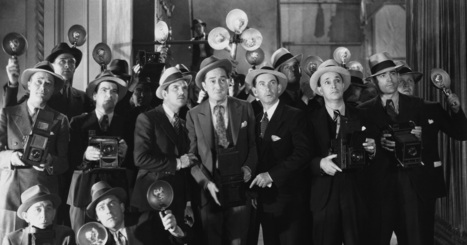

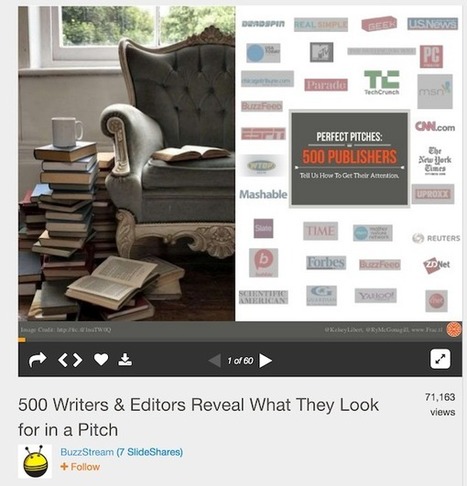

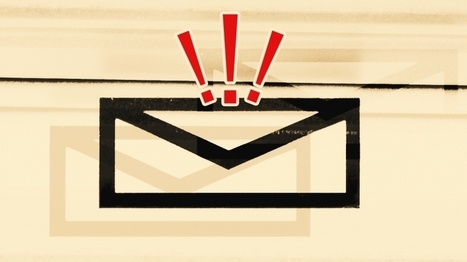





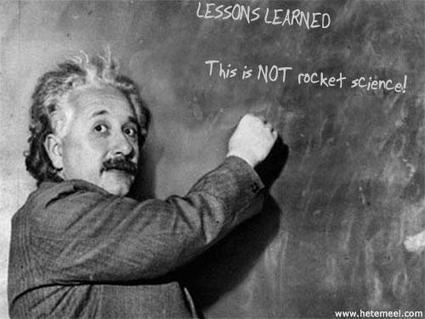


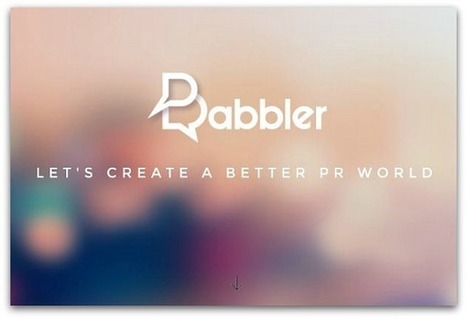

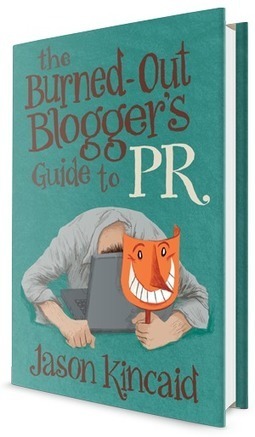
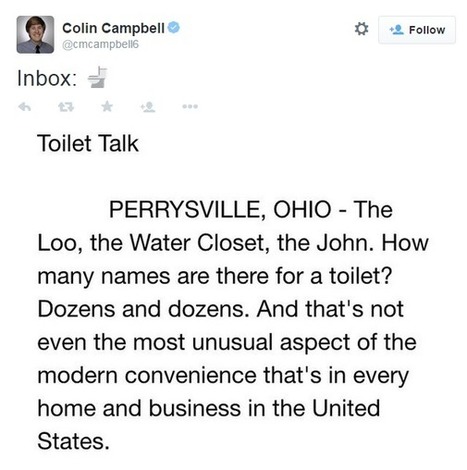



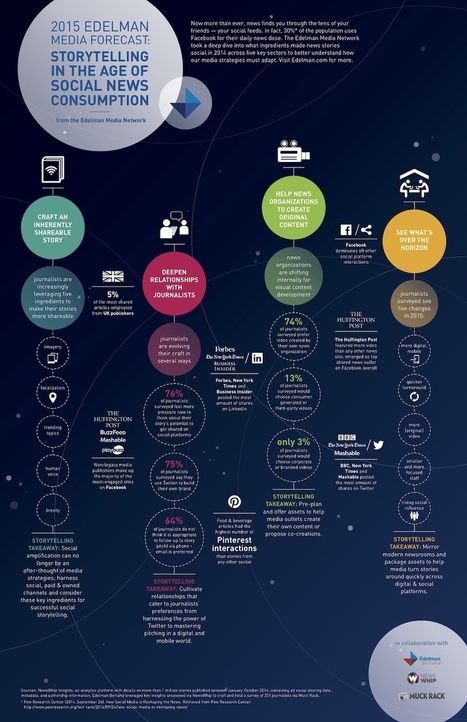






Media relations basics from Eric Bergman.